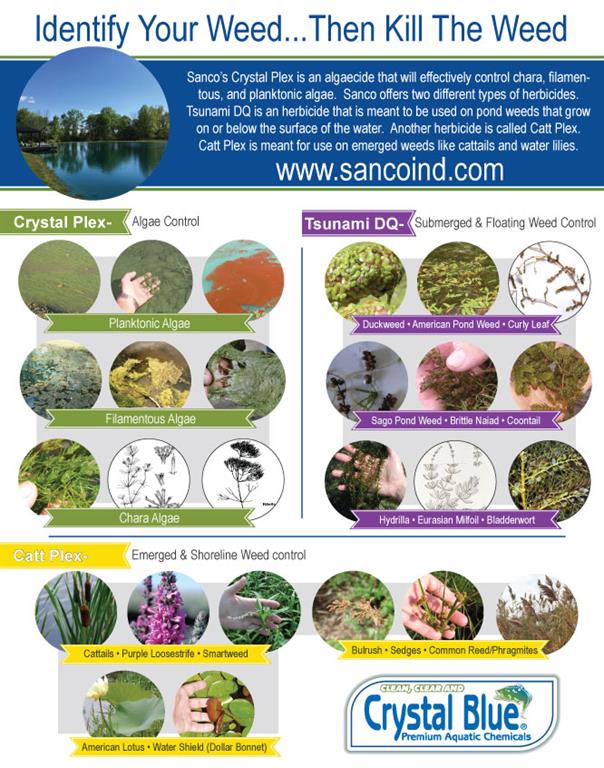Most DIY maintenance projects require a little bit of research before you start. Pond maintenance is no different. There are several important bits of information that you should gather before treating your pond. First, is the size of the pond. Second, is how to properly identify any growth you may need to treat.
Whether you have built your own pond or have purchased a property with one in it, you should know what the size of your pond is. You wouldn’t purchase a property with-out knowing what size it is, the same knowledge will help you take proper care of your pond. When you need to treat your pond, knowing the exact size is essential for applying the correct dosage of all pond maintenance products. If you didn’t build your pond, or it is 15 to 20 years old, then you are going to have to calculate your pond’s size. While this may seem like an enormous task, it is vital and will guarantee you are well prepared to maintain and treat your pond to keep it healthy.
How To Measure The Size of Your Pond
• Square or rectangle ponds – multiply length x width, then divide by 43,560
• Round ponds – multiply diameter x itself, then divide by 547,390
How to Measure Pond Depth
1. Get a long piece of PVC pipe and mark 1 foot increments on it using a waterproof marker
2. Take depth measurements uniformly over the entire pond.
3. Add the measurements together and divide by the number of measurements taken.
4. This will give you’re you the average depth in feet.
Before you treat, you should also be sure you properly identify growth. If you don’t know what is growing, how can you control it? When it comes to identifying the growth in your pond, we don’t expect you to become a botanist. Sanco has an online pond weed identification page. This page has some of the most common aquatic weeds and the corresponding product used to treat the growth. Keep these questions in mind when trying to identify your pond weeds:
1. Where is the weed growing? Is it on the surface, under the water, or around the shoreline?
2. Is the plant rooted or does it float freely moving around on the surface? You may have to pull at it to find out.
3. What color is the plant? Light green, dark green, or yellowish?
4. What is the texture and the structure of the growth? Is it a granular substance or a small leaflet floating on the surface?Does it have thick hair, slime like film, a crunchy feeling or is it more grass like?
5. Does it have an odor that is musky or does it have no scent at all?
6. What is the condition of your pond water? Is it ex-tremely clear, muddy, or really green?

If you are still having difficulty identifying your growth after visiting our weed id page, contact us. We always gladly accept photos to help you identify pond weeds. Please note, send at least three photos: one of the entire pond; one that shows the growth in the water; and the last one of growth close-up in your hand. This way we can see the details exactly without any unnecessary plants in the background. So we can serve your query best please be sure the photos are clear.
Tune in next week for part 3 of our series on pond maintenance. We will be discussing the products to use and when to use them.
Before You Treat (Current Post)
For more information on pond maintenance contact the experts at Sanco.
